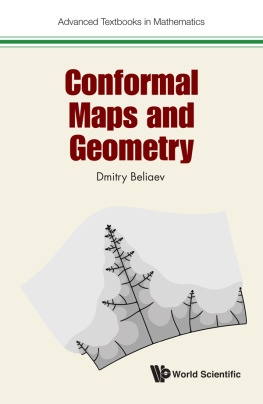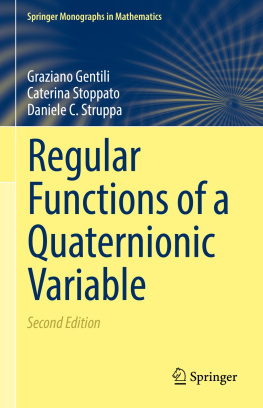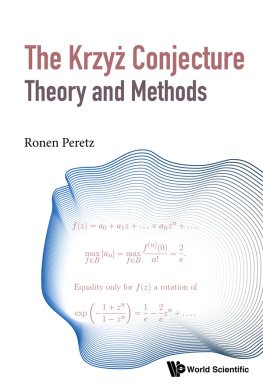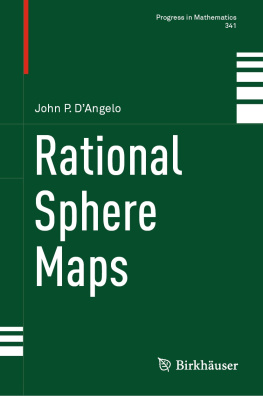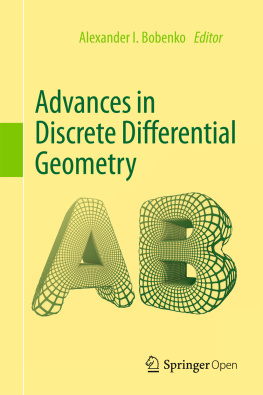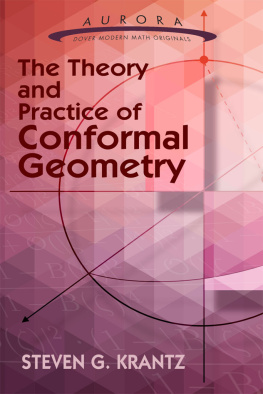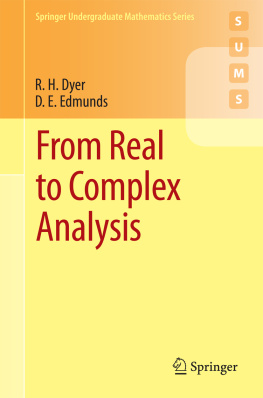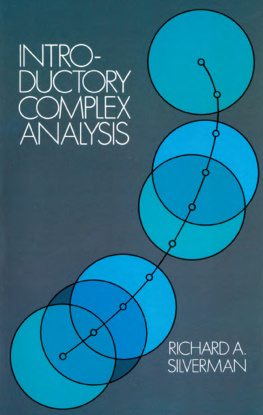Contents

Advanced Textbooks in Mathematics
Print ISSN: 2059-769X
Online ISSN: 2059-7703
The Advanced Textbooks in Mathematics explores important topics for post-graduate students in pure and applied mathematics. Subjects covered within this textbook series cover key fields which appear on MSc, MRes, PhD and other multidisciplinary postgraduate courses which involve mathematics.
Written by senior academics and lecturers recognised for their teaching skills, these textbooks offer a precise, introductory approach to advanced mathematical theories and concepts, including probability theory, statistics and computational methods.
Published
Crowds in Equations: An Introduction to the Microscopic Modeling of Crowds
by Bertrand Maury and Sylvain Faure
The Wigner Transform
by Maurice de Gosson
Periods and Special Functions in Transcendence
by Paula B Tretkoff
Mathematics of Planet Earth: A Primer
by Jochen Brcker, Ben Calderhead, Davoud Cheraghi, Colin Cotter, Darryl Holm, Tobias Kuna, Beatrice Pelloni, Ted Shepherd and Hilary Weller edited by Dan Crisan
Conformal Maps and Geometry
by Dmitry Beliaev

Published by
World Scientific Publishing Europe Ltd.
57 Shelton Street, Covent Garden, London WC2H 9HE
Head office: 5 Toh Tuck Link, Singapore 596224
USA office: 27 Warren Street, Suite 401-402, Hackensack, NJ 07601
Library of Congress Cataloging-in-Publication Data
Names: Beliaev, Dmitry, author.
Title: Conformal maps and geometry / by Dmitry Beliaev (University of Oxford, UK).
Description: New Jersey : World Scientific, 2018. | Series: Advanced textbooks in mathematics | Includes bibliographical references and index.
Identifiers: LCCN 2018040361 | ISBN 9781786346131 (hc : alk. paper)
Subjects: LCSH: Conformal mapping. | Conformal geometry. | Mappings (Mathematics)
Classification: LCC QA360 .B3354 2018 | DDC 515/.9--dc23
LC record available at https://lccn.loc.gov/2018040361
British Library Cataloguing-in-Publication Data
A catalogue record for this book is available from the British Library.
Copyright 2020 by World Scientific Publishing Europe Ltd.
All rights reserved. This book, or parts thereof, may not be reproduced in any form or by any means, electronic or mechanical, including photocopying, recording or any information storage and retrieval system now known or to be invented, without written permission from the Publisher.
For photocopying of material in this volume, please pay a copying fee through the Copyright Clearance Center, Inc., 222 Rosewood Drive, Danvers, MA 01923, USA. In this case permission to photocopy is not required from the publisher.
For any available supplementary material, please
visit https://www.worldscientific.com/worldscibooks/10.1142/Q0183#t=suppl
Desk Editors: V. Vishnu Mohan/Jennifer Brough/Koe Shi Ying
Typeset by Stallion Press
Email:
Printed in Singapore
To my family. Without your love, encouragement
and support I would have never finished this book.
Preface
Complex analysis in general, and function theory in particular, are old and well-developed subjects. In this textbook, we concentrate on a more geometric approach that originates from the Riemann mapping theorem, which could be seen as a statement that there is a correspondence between univalent functions and planar domains. This allows us to develop a powerful theory of univalent functions with a strong geometric flavour.
The idea of this book was conceived when I started giving courses about the SchrammLoewner evolution (SLE) and realized that there is no single complex analysis text which gives all necessary background function theory information in a simple and accessible manner. There are many excellent books on function theory, in particular books by Ahlfors, Duren, and Pommerenke which I really like but, at the same time, they might be too advanced for some students and do not cover everything that I want to explain. In particular, univalent maps in the upper half-plane, which are important in the context of the SchrammLoewner evolution, are not treated in the classical works. Another excellent source is Lawlers book, which treats complex analysis from a probabilistic perspective.
A significant part of this book is based on the lecture notes I developed for several courses that I have taught in Oxford. It is intended to be used as the main textbook for an advanced undergraduate or a graduate course studying conformal maps on their own or building the analysis base to study SLE. Prerequisites are absolutely minimal: a basic course in complex analysis, some understanding of measures and integration (but most of the book does not require it), and basic knowledge of differential equation (for the final chapter only).
The book is organized as follows:
Introduction contains a list of basic results that might be missing from a basic complex analysis course, but will be used throughout the book. We briefly discuss these results and give references to other books that study them in greater detail.
Riemann mapping theorem gives the classical proof of the Riemann mapping theorem using the normal families approach. After this, we study the boundary behaviour of uniformizing maps and answer when conformal maps are continuous up to the boundary. Finally, we briefly discuss the connection between conformal maps and the Dirichlet boundary problem and uniformization of multiply connected domains.
Basic theory of univalent maps gives an introduction to the general theory of univalent functions. In this chapter, we prove universal bounds on functions and their derivatives (BieberbachKoebe theory) and discuss subordination and corresponding analytic and geometric estimates. After this, we discuss the notions of capacity and their relation to geometry. Then we study the properties of half-plane uniformizing maps. Finally, this chapter gives an introduction to coefficient problems and explains the relation between convergence of domains and functions.
Extremal length introduces the theory of conformal invariants defined in terms of a very geometric notion of extremal length. This chapter gives several applications of extremal length and explains how classical topics of harmonic measure and prime ends can be studied by the extremal length techniques.
Loewner evolution gives a modern introduction to the theory of Loewner evolution; in particular, it carefully treats both (classical) radial and chordal cases. This chapter explains how the Loewner evolution ideas can be used in classical function theory and discusses the geometric properties of hulls generated by the Loewner evolution.
The book contains a number of exercises that are an integral part of the text; solutions to all exercises can be found at the end of each chapter.
D. Beliaev
Oxford 2019
Acknowledgements
I would like to thank Lennart Carleson, Victor Havin, Peter Jones, Nikolai Makarov and Stanislav Smirnov for teaching and inspiring me. Special thanks go to Fredrik Viklund, Steffen Rohde and Ilia Binder for their valuable comments on the first draft of this book and to Michael McAuley for his help with proofreading. I would like to express my gratitude to Laurent Chaminade who suggested that I should publish this book, Mary Simpson, Jennifer Brough and the rest of the World Scientific team who made this book possible. I would also like to thank the Engineering and Physical Sciences Research Council who partially funded my research through a very generous fellowship EP/M002896/1.

